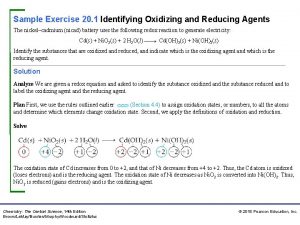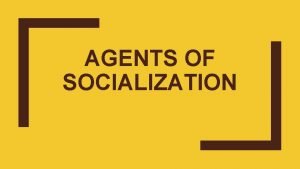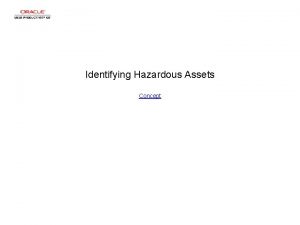Identifying Targets and Agents of Change Who Can








- Slides: 8

Identifying Targets and Agents of Change: Who Can Benefit and Who Can Help? Copyright © 2014 by The University of Kansas

What are the targets and agents of change? • Targets of change experience, are at risk for or contribute to the problem. • Agents of change can influence the people and conditions that contribute to the problem. • Targets and agents of change may be the same people. Copyright © 2014 by The University of Kansas

Examples of targets and examples of change • • Children and youth Peers Older adults Parents and caregivers Service providers Teachers Business people Elected and appointed officials Copyright © 2014 by The University of Kansas

What do agents of change do? • Establish relationships with those affected. • Diagnose the issue. • Convince others of the need for and the possibility of change. • Help make change happen. • Help maintain change. Copyright © 2014 by The University of Kansas

How do you identify targets and agents of change? • Identify who experiences, is at risk for, and contributes to the problem. • Consider whose action or inaction could make a difference. • Record, review, and revise. Copyright © 2014 by The University of Kansas

For targets of change: • Know who is affected by the problem. • Know who has previously been affected by the problem. • Know who are the peers of those affected. Copyright © 2014 by The University of Kansas

For agents of change: Know who has the power to bring about change. Know who has time, resources, etc. Know who might be able to do it. Know who already has a relationship with targets of change. • Consider people who were (or are) targets. • • Copyright © 2014 by The University of Kansas

For both: • Think about people from all parts of your community. • Consider those who your organization particularly wants to target or work with. Copyright © 2014 by The University of Kansas
 Identifying market segments and targets chapter 9
Identifying market segments and targets chapter 9 Identifying market segments and targets
Identifying market segments and targets Identifying market segments and targets chapter 9
Identifying market segments and targets chapter 9 Five patterns of target market selection
Five patterns of target market selection Segment by segment invasion
Segment by segment invasion Single segment concentration
Single segment concentration Identifying oxidizing and reducing agents
Identifying oxidizing and reducing agents Identifying and non identifying adjective clauses
Identifying and non identifying adjective clauses Whats an adjective clause
Whats an adjective clause















